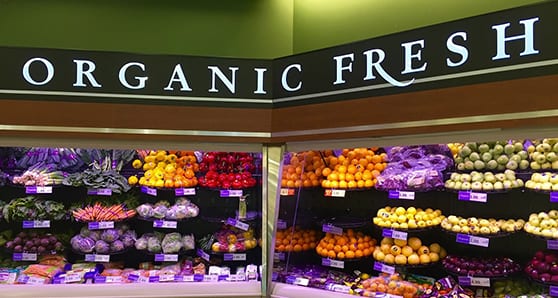 Most consumers have seen Non-GMO logos on bread and other food products at the grocery store. But the verification program now faces criticism.
Most consumers have seen Non-GMO logos on bread and other food products at the grocery store. But the verification program now faces criticism.
The Non-GMO Project verified logo is now on over 50,000 food products in North America that bring in more than $30 billion in retail sales. The green leaves and orange butterfly logo first started showing up on products in 2010 and are now seemingly everywhere.
GMOs (genetically modified organisms) have attracted fierce criticism since they entered the food chain in 1994. GMO opponents routinely urge consumers to choose products with the logo as a means of avoiding GMOs.
A GMO is a plant or animal whose genetic makeup has been altered in a laboratory using genetic engineering or transgenic technology. Most things in nature are genetically modified, but biotechnologies create genetic combinations we wouldn’t normally see in nature.
That’s one of the main reasons many consumers are uncomfortable with the concept of genetic engineering: it’s unnatural. Many critics go as far as stating GMOs should be outlawed.
GMO development is carried out in labs without consumer consent. Then those genetically engineered crops – such as canola, corn and soy – are grown by farmers and enter the food chain.
Since both the United States and Canada have a voluntary labelling regime for genetically modified food ingredients, it was almost impossible for consumers to avoid buying non-GMO products. The only option was to go organic, but those items quite often are 20 to 30 per cent more expensive. Not everyone can afford the added cost
All the food we eat has been modified by humans by Roger Wager
The information void on the market, created by lax labelling policies, encouraged a movement in the opposite direction.
The Non-GMO Project, a non-profit organization located in Bellingham, Wash., is essentially the product of a poor risk communication strategy by the biotechnology sector. Companies like Bayer and BASF only have themselves to blame. For years, they sold their products to farmers without much consideration for consumers. And governments in Canada and the United States have sanctioned the entire charade for almost three decades.
But the Non-GMO Project has its flaws, which are now being exposed by a greater number of organizations, including the U.S. Food and Drug Administration (FDA).
The Non-GMO Project verified logo essentially means two things:
- the company behind the food product has paid for its product to be verified by the group;
- the product earned approval because genetic sequences aren’t present above a certain threshold.
The ‘threshold’ is key. The group uses a method called polymerase chain reaction (PCR) testing to analyze DNA sequences of food products. The verified logo doesn’t signify that the product is GMO-free. It only indicates that the product has little GMO content.
Methodological challenges mean the group can’t guarantee any product is GMO-free. The group notes this on its website.
So most consumers don’t know what the logos really mean. After almost a decade, the presence of the logos on thousands of food products has only added mystery to an already confused marketplace.
Some companies are apparently beginning to wonder if putting the logo on their packaging is still worth it.
The non-profit organization, with revenues of over $2 million, slaps its label on just about any product, including salt, water and even orange juice. Not only can salt and water not be genetically modified, many consumers aren’t aware that there are no genetically engineered oranges in the marketplace.
So FDA recently told the industry it will crack down on exaggerated claims. Suggesting or implying that food products with the Non-GMO Project label are safer and more nutritious is simply misleading and rests on scrawny scientific evidence. And putting the logo on products that would never contain any genetically engineered ingredients just damages the credibility of the project.
Still, the Non-GMO Project is hardly to blame. Consumers need and want to make informed purchasing decisions and the group sought to provide a clear labelling system. It worked for a while, but the group’s eagerness has made the program more vulnerable.
So we may be going back to square one. Until North American governments adopt a mandatory labelling, consumers will unfortunately continue to shop blindly.
Dr. Sylvain Charlebois is senior director of the agri-food analytics lab and a professor in food distribution and policy at Dalhousie University.
Sylvain is a Troy Media Thought Leader. Why aren’t you?
The views, opinions and positions expressed by columnists and contributors are the author’s alone. They do not inherently or expressly reflect the views, opinions and/or positions of our publication.


